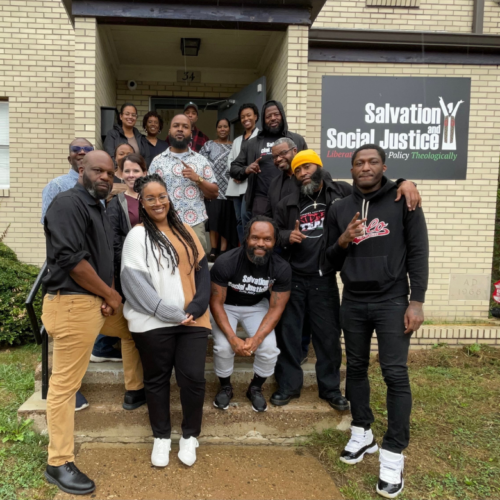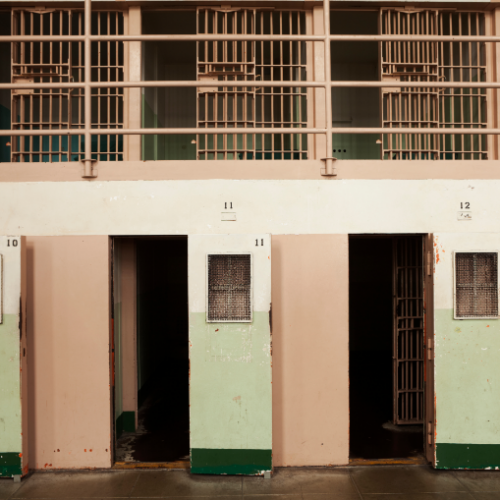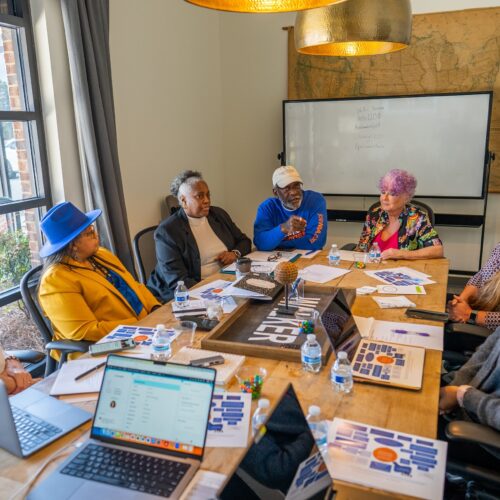Birmingham-Area Employers Work to Break Down Barriers to Employment for People with Criminal Records

For Stephanie Mason—human resources manager at Dunn Building Company in Birmingham, Alabama—what appears on a potential employee’s job application is not necessarily the most important factor to consider when hiring.
“I’m really hiring [the applicant’s] attitude,” she said. “If you have the right attitude, I can always teach you what you need to know. People who are reentering society [from jails and prisons] are more likely to show up early, be ready to work, stay late, and be prepared to go the extra mile. We don’t discourage anyone with a record from applying because, 9 times out of 10, we will end up with a better employee because of their background.”
Mason joined other Alabama business leaders in November for “Reducing the Risk of a Criminal Record: The Employer’s Perspective,” a forum hosted by the Birmingham Business Alliance to understand employers’ perspectives on hiring people who have been incarcerated, and share strategies for keeping Northern Alabama an attractive place for companies to call home.
With the passage of Senate Bill 67—Alabama’s bipartisan justice reinvestment legislation—in May 2015, the state began transforming its perspective on reentry issues and making significant steps toward improving its justice system. The bill aims to strengthen community-based supervision and treatment, while prioritizing prison space for people who have violent convictions.
At the employment forum, Alabama State Representative Mike Jones, chief sponsor in the House of Senate Bill 67, discussed how the bill will facilitate better statewide planning and coordination of job training, which benefits both employers and those returning to the community from jails and prisons.
“We have a strong need for certain jobs in the southern part of the state, but most of the training in those fields occurs in the northern part of the state, so better coordination would allow us to pay closer attention to what employers across the state need in terms of skills,” he said. “Then, we can focus on how to provide those skills to inmates while they are still in the system.”
Building Relationships
Even for people who receive adequate preparation and job training while in prison or jail, guidance and strong support systems are needed once they return to the community, according to Foster Cook of the University of Alabama’s Treatment Alternatives for Safer Communities (TASC) program. At the forum, Cook discussed TASC’s focus on mentorship and the framework for setting individuals up for success immediately upon release.
Much of that success relies on a person’s access to stable employment. However, concerns about an applicant’s criminal record are still prevalent among many employers when making hiring decisions. Workforce providers respond to some of these concerns by developing relationships with businesses in the community. Some providers, like The Dannon Project, incentivize hiring by offering partial wage reimbursements or tax credits to employers during an 80- to 120-day trial period. Dannon Project Executive Director Kerri Pruitt said they’ve seen 67 percent of the job seekers who have entered the program receive permanent offers of employment once the trial period ends.
But to make any reentry strategy truly effective, collaboration is key, said Johnny Johns, CEO of Protective Life Corporation.
“It is surprising how many interrelated pieces there are to making these employment programs work,” he said. “It’s not just ‘Ban the Box.’ It’s a broader set of connections that need to be made within our communities to really attack this problem.”
The Council of State Governments (CSG) Justice Center is doing just that with the support of the U.S. Department of Justice’s Bureau of Justice Assistance (BJA) and the Annie E. Casey Foundation, with guidance from the Employment and Training Administration at the U.S. Department of Labor. In 2013, the CSG Justice Center released the Integrated Reentry and Employment Strategies (IRES) white paper, which focuses on bridging the reentry and workforce fields to ensure people returning from incarceration are connected to the right types of employment services based on their assessed risk and needs. This systems-level approach to improving reentry and employment outcomes is currently being piloted in Milwaukee County, Wisconsin and Palm Beach County, Florida.
__
“Reducing the Risk of a Criminal Record: The Employer’s Perspective” was organized with support from the National Reentry Resource Center—a project of the CSG Justice Center, which is administered by BJA—and was inspired by “State Pathways to Prosperity,” an initiative supported by the CSG Justice Center’s Reentry and Employment Project.
In response to growing calls for police reform in New Jersey, particularly following the shootings of Najee Seabrooks…
Read MoreA positive school experience, where a child feels secure, is essential for their well-being. However, for many children…
Read More Three Things to Know About New Jersey’s Groundbreaking Community Response Legislation
Three Things to Know About New Jersey’s Groundbreaking Community Response Legislation
In response to growing calls for police reform in New Jersey, particularly…
Read More The Path to Statewide Community Crisis Response in New Jersey: A Community Advocate’s Perspective
Read More
The Path to Statewide Community Crisis Response in New Jersey: A Community Advocate’s Perspective
Read More
 Supporting Children of Incarcerated Parents: Reimagining School and Community Collaboration
Supporting Children of Incarcerated Parents: Reimagining School and Community Collaboration
A positive school experience, where a child feels secure, is essential for…
Read More Bridging Communities and Correctional Systems: Q&A with CSG Justice Center Advisory Board Member Commissioner Nicholas Deml
Read More
Bridging Communities and Correctional Systems: Q&A with CSG Justice Center Advisory Board Member Commissioner Nicholas Deml
Read More
 Assigned to the Cloud Crew: The National Incarceration Association’s Hybrid Case Management for People with Behavioral Health Needs
Assigned to the Cloud Crew: The National Incarceration Association’s Hybrid Case Management for People with Behavioral Health Needs
When returning to their communities from criminal justice settings, people with behavioral…
Read More










